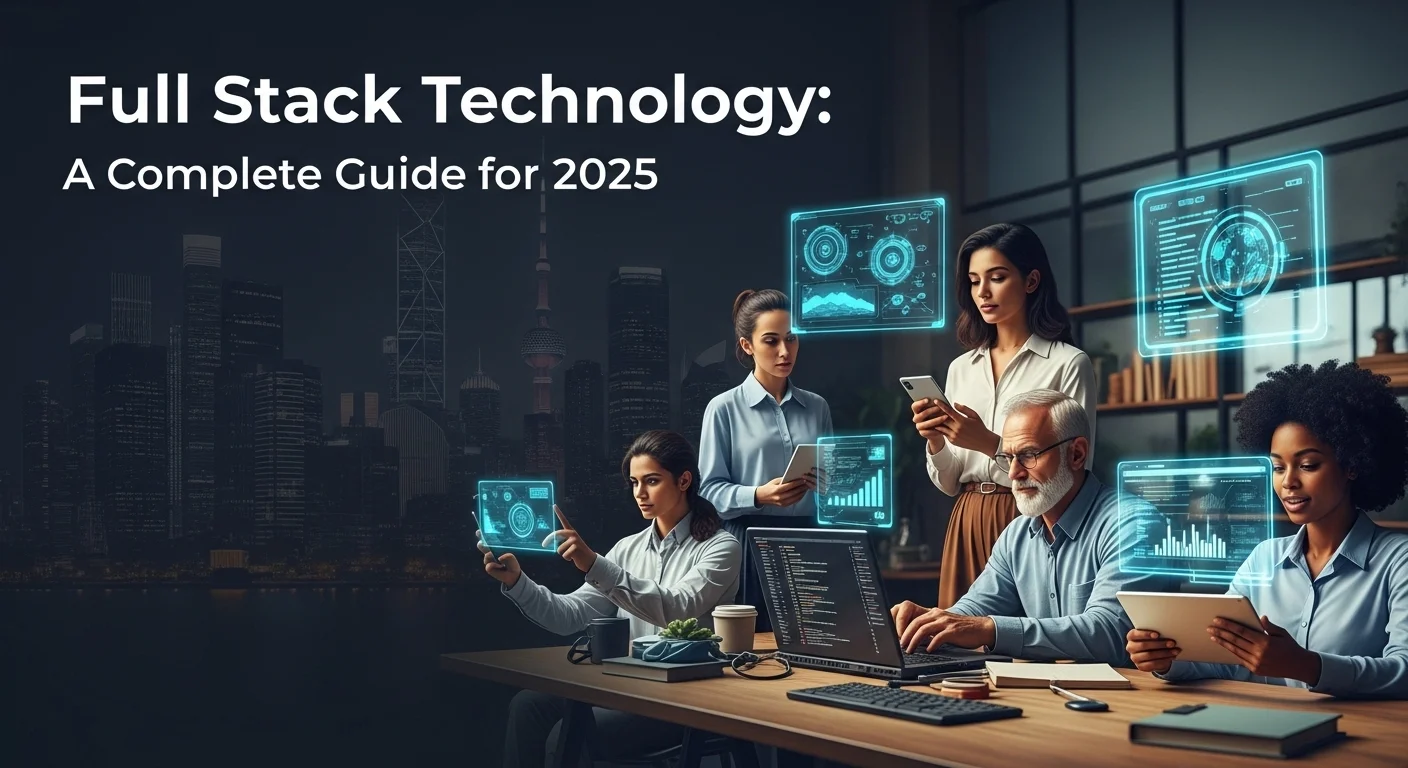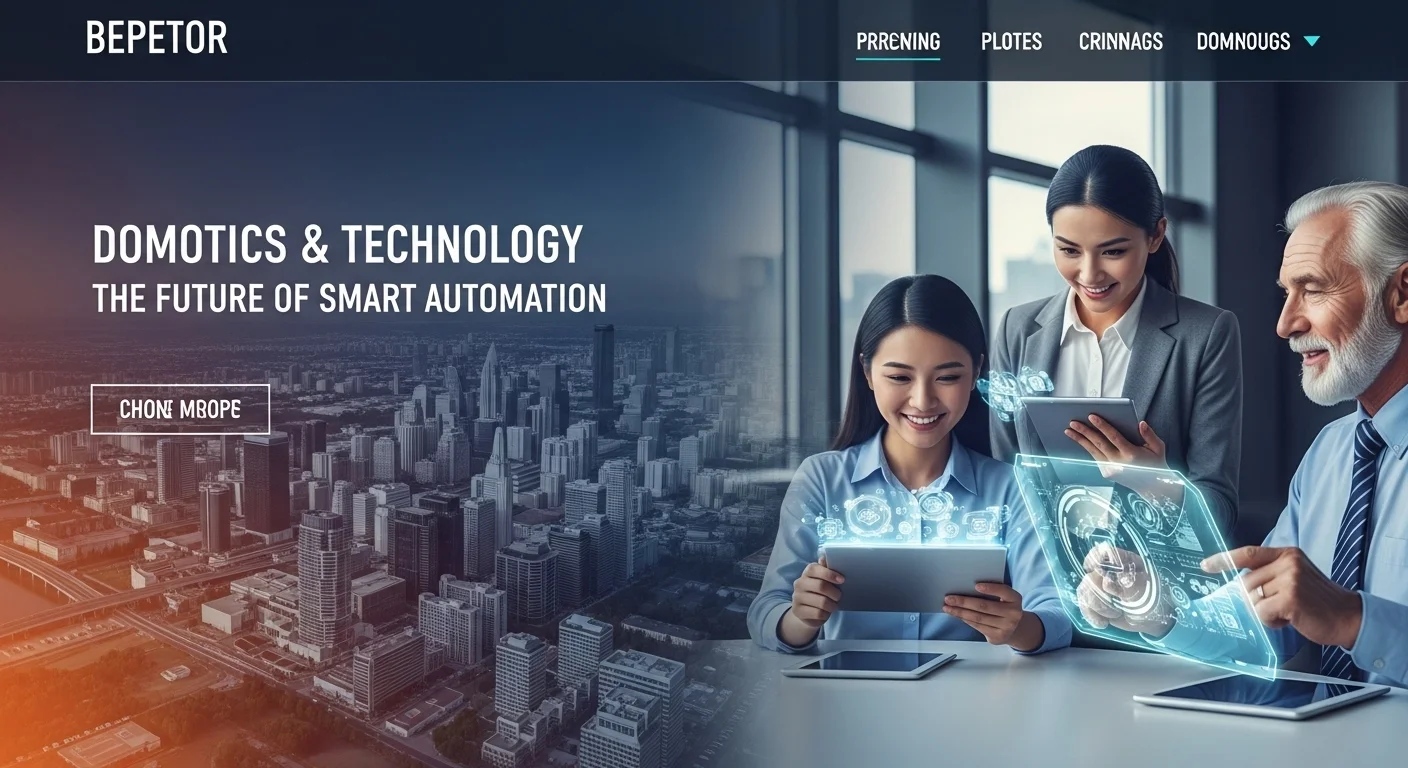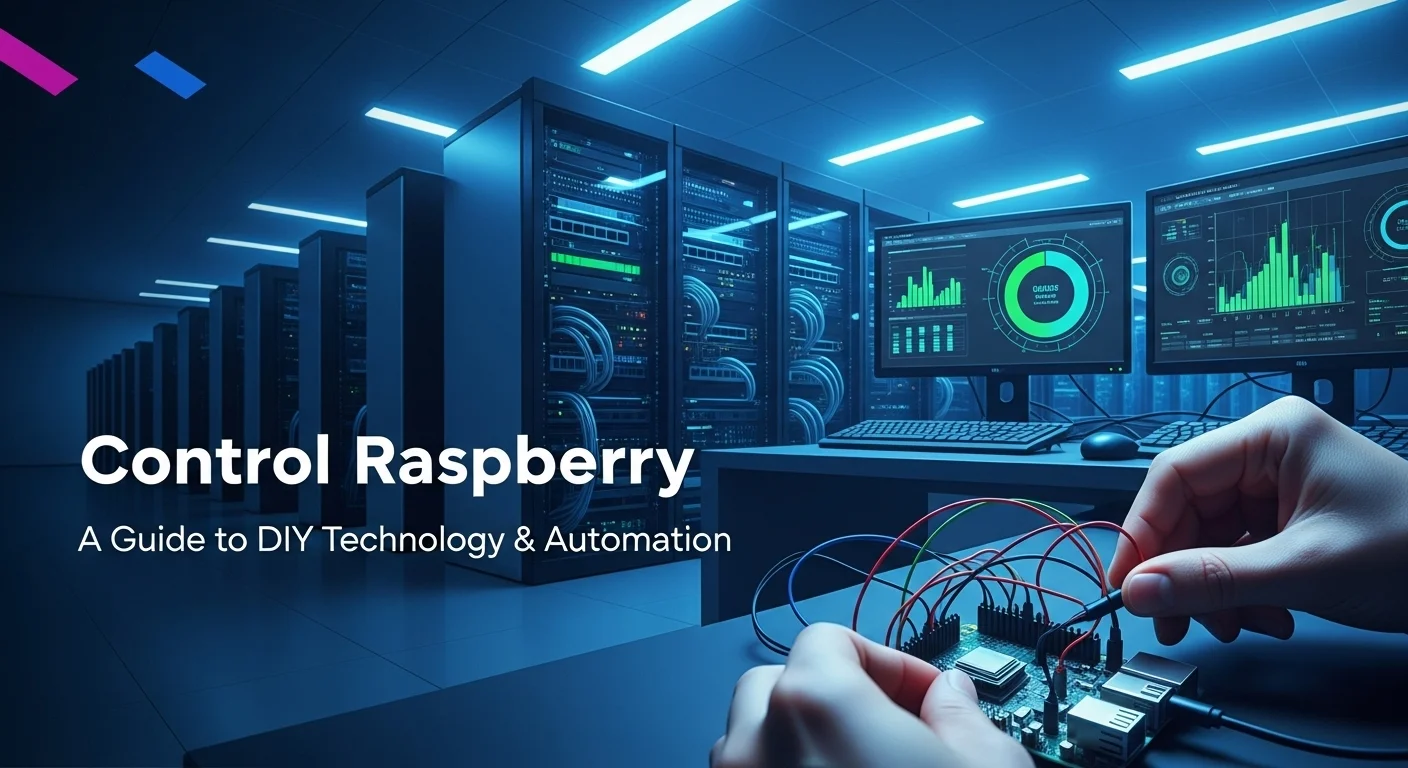What is Full Stack Development? A Practical Guide for 2025

Executive Summary
I spent the first few years of my career as a dedicated back-end developer, living in a world of servers, databases, and APIs. The front-end was this mysterious land where designers and UI specialists worked their magic. But when I finally decided to dive in and build a complete feature from the database query all the way to the button a user clicks, everything changed. That's the real magic of Full Stack development: it's the ability to see the whole picture. This approach, which blends both client-side and server-side skills, empowers a single developer to build robust, complete applications. For businesses, this means faster development and more cohesive products. For developers like us, it means becoming incredibly versatile and valuable problem-solvers. This guide is my attempt to share what I've learned, breaking down what Full Stack is, why it's so critical today, and the skills you actually need to succeed in this exciting field.
Table of Contents
Table of Contents
What is Full Stack and Why Does It Matter in Technology?
At its heart, Full Stack development is the practice of being able to work on all parts of an application. Think of it like being the general contractor for a house. You understand the entire process, from laying the foundation and running the plumbing (the back-end) to painting the walls and installing the light fixtures (the front-end). A professional with these skills is called a full stack developer or full stack engineer—a versatile expert who can bring an idea to life from scratch. To really get it, let's break down the layers.
The front-end is everything you, the user, see and interact with. It’s the layout, the colors, the buttons, and the forms. The core tools here are HTML for structure, CSS for style, and JavaScript to make things happen when you click. In my experience, you'll almost always use a framework like React, Angular, or Vue.js to build modern, complex interfaces without reinventing the wheel every time.
The back-end, on the other hand, is the engine room. It's the server, the application logic, and the database working together behind the scenes. This is where data is processed, users are authenticated, and all the heavy lifting happens. We use languages like Node.js, Python, Ruby, or Java here. Frameworks such as Express.js for Node.js or Django for Python provide the scaffolding to build powerful server-side applications. The back-end also creates the APIs (Application Programming Interfaces) that the front-end uses to talk to the server.
Finally, there's the database, the application's memory. This is where all the data lives, whether it’s in a structured SQL database like PostgreSQL or a flexible NoSQL database like MongoDB. A good full stack web developer needs to know how to design, manage, and query these databases effectively.
Why the Full Stack Approach is a Game-Changer
The demand for full stack developers isn't just a trend; it's a response to how modern businesses need to operate: quickly and efficiently. When I was on a team with separate front-end and back-end specialists, there was a lot of 'throwing work over the wall.' It caused delays and misunderstandings. A full stack developer eliminates that friction. A single person can own a feature from start to finish, which is a massive win for speed and efficiency, especially for startups trying to launch a product fast.
It's also more cost-effective. Hiring one developer who can handle both sides of the stack is often more economical than hiring two specialists. But for me, the biggest advantage is the holistic understanding. When you work on the entire application, you make better decisions. You can anticipate how a back-end change will impact the UI, leading to a more stable and thoughtfully designed product. A full stack engineer is a master problem-solver because they see the entire system.
A Special Note on the Java Full Stack Developer
Within this field, some specializations are in high demand. One I’ve seen consistently, especially in large corporations, is the java full stack developer. Java has been a beast in the enterprise world for decades because it's secure, robust, and scalable. A Java Full Stack pro marries that back-end power with modern front-end skills. They'll use frameworks like Spring Boot to build powerhouse server applications while using React or Angular to create a sleek user experience. If you see a job posting for a big bank or a major e-commerce site, there's a good chance they're looking for a java full stack developer.

Complete Guide to Full Stack Technology and Business Solutions
Going from knowing the concepts to actually building a full stack project requires a plan. It's about choosing the right tools for the job and understanding how they fit into a business's goals. Let's walk through the technology stacks I've seen most often and the process of putting it all together.
A Deep Dive into Popular Technology Stacks
A 'tech stack' is just the set of tools you use to build your application. Choosing a stack is one of the first big decisions you'll make, and it has real consequences for your project.
- The MERN Stack (MongoDB, Express.js, React, Node.js): This is a personal favorite of mine for new projects and startups. Why? It's JavaScript all the way down. Using one language for the database, back-end, and front-end makes development feel seamless. I've used MERN to build MVPs (Minimum Viable Products) incredibly quickly because you're not constantly switching mental gears between languages. It’s perfect for single-page applications and projects that need a flexible data structure.
- The MEAN Stack (MongoDB, Express.js, Angular, Node.js): This is MERN's cousin. The big difference is using Angular instead of React. Angular is a more structured, 'opinionated' framework. In my experience, large companies often prefer MEAN for big, complex enterprise applications because that structure helps keep massive codebases manageable over time.
- The LAMP Stack (Linux, Apache, MySQL, PHP): Don't count out the classics. LAMP has been the workhorse of the web for decades, powering giants like WordPress. While many new projects gravitate towards JavaScript or Python, LAMP is still an incredibly stable, proven, and cost-effective choice. Understanding it gives you a fantastic foundation in core web principles.
- The Django Stack (Python, Django, Apache, PostgreSQL/MySQL): Python's clean syntax is a joy to work with, and the Django framework comes with so many features 'out of the box' that it feels like you have superpowers. I've seen this stack used to great effect in projects heavy on data science and machine learning, where Python's powerful libraries are a huge advantage.
- The Java Stack (Java, Spring, Oracle/PostgreSQL, Angular/React): As I mentioned, this is the go-to for the corporate world. When performance, security, and scalability are non-negotiable, the Java stack delivers. A java full stack developer working with these tools is building applications designed to handle immense traffic and complex business logic reliably.
Technical Methods for Building Full Stack Applications
Building an app is a journey with several key stages. A good full stack engineer guides the project through each one.
1. Architecture and Design: Before you write a single line of code, grab a whiteboard. Seriously. I can't tell you how many hours of headaches I've saved by sketching out the application architecture first. Will it be a single 'monolithic' app or a collection of 'microservices'? You also need to design your database schema—what your data looks like and how it connects.
2. Back-End Development: This is where you build the engine. You'll set up the server, write the business logic, handle user logins, and connect to the database. Your main job here is to create clean, secure, and efficient APIs that your front-end will use to get and send data.
3. Front-End Development: Now you build the part users see. You take the design mockups and turn them into a living, breathing website using HTML, CSS, and JavaScript. You'll use the APIs created in the back-end to fetch data and make the page dynamic and interactive.
4. API Integration: The front-end and back-end need to talk to each other, and the API is their language. Making sure this communication is seamless is a critical skill. I've spent countless hours in tools like Postman, testing API calls to make sure they're sending and receiving data exactly as expected.
5. Deployment and DevOps: An app isn't finished until real people can use it. This means deploying it to the cloud using platforms like AWS, Azure, or Google Cloud. Modern developers use tools like Docker to package their app into a 'container' and Kubernetes to manage those containers. Setting up automated CI/CD pipelines is also a must—it means your code gets tested and deployed automatically, which lets you release updates faster and with more confidence.

Tips, Strategies, and the Future of Full Stack
Becoming a great full stack developer is more than just knowing a bunch of technologies. It's about a mindset of quality, continuous learning, and strategic thinking. Here are some of the hard-learned lessons and best practices I rely on every day, plus a look at where things are headed.
Best Practices for High-Quality Full Stack Development
Following these principles is what separates code that just 'works' from code that's truly professional: scalable, secure, and a pleasure to maintain.
1. Write Clean and Maintainable Code: Your code should be easy to read. Use clear variable names and break down complex problems into small, simple functions. I live by the DRY principle (Don't Repeat Yourself). If you're copying and pasting code, you're probably doing something wrong. The goal is to write code that you or another developer can understand six months from now without wanting to pull your hair out.
2. Let Me Be Blunt: Prioritize Security from Day One: Security is not a feature you add at the end. I’ve seen projects get into deep trouble by treating it as an afterthought. You must validate every piece of data a user sends you. Use best practices like hashing passwords (never store them as plain text!) and protecting against common attacks like SQL injection. A professional full stack web developer is always thinking about how their code could be exploited.
3. Testing is Non-Negotiable: Untested code is broken code. You need a mix of tests: unit tests for small, individual pieces of logic, integration tests to ensure different parts work together, and end-to-end tests that simulate a real user's journey through your app. Automating these tests gives you the confidence to make changes without breaking everything.
4. Obsess Over Performance: A slow app is a failed app. Performance is a feature. On the front-end, that means optimizing images and making your code as small as possible. On the back-end, it's about writing efficient database queries and using caching to avoid doing the same work over and over.
5. Use Version Control Like a Pro: Git is your best friend. It's the safety net that lets you experiment without fear. Learn a good branching strategy (like GitFlow) to keep your projects organized. And please, write clear commit messages. 'Fixed a bug' tells your team nothing. 'Fixed user login issue caused by incorrect password hashing' is a message that actually helps.
Essential Tools of the Trade
To work effectively, a full stack engineer needs a solid toolkit. These are some of the tools I can't live without:
- Project Management: Jira, Trello, or Asana. You need a way to track your work, especially on a team.
- IDEs: Visual Studio Code is my daily driver. For a java full stack developer, IntelliJ IDEA is often the top choice. A great IDE makes you faster and more efficient.
- API Testing: Postman or Insomnia. These are essential for debugging the connection between your front-end and back-end.
- Containerization: Docker and Kubernetes. These have become the standard for deploying applications in a predictable and scalable way.
- Cloud Services: You have to be comfortable with at least one major cloud provider—AWS, Azure, or Google Cloud. Their services are the building blocks of modern applications.
Future Trends and My Experiences in Full Stack Technology
This field never stands still. Here’s what I'm seeing on the horizon and how it's already changing my work:
The Rise of AI Assistants: AI tools like GitHub Copilot are changing how we write code. They're not here to replace us, but to act as a super-smart pair programmer. Learning to work effectively with these tools is quickly becoming a new, essential skill. We're also being asked more often to integrate AI/ML models directly into our applications to create smarter features.
Serverless is Growing Up: Serverless architecture, where you run code without managing servers, is becoming more and more powerful. It allows me to focus purely on the application logic and not worry about patching operating systems. It's incredibly efficient and cost-effective for the right kind of problem.
WebAssembly (Wasm): This is an exciting one. Wasm allows us to run code written in languages like C++ or Rust directly in the browser at blazing-fast speeds. This is opening the door for incredibly complex applications, like video editors and 3D games, to run right on the web.
Ultimately, a successful career as a full stack web developer or full stack engineer comes down to a passion for building things, a commitment to quality, and an endless curiosity to learn what's next. By combining technical skill with strategic thinking, we're the ones building the future of the web.
Expert Reviews & Testimonials
Sarah Johnson, Business Owner ⭐⭐⭐
This was a good overview, but as a business owner, I was hoping for more real-world case studies on how implementing a Full Stack team impacts the bottom line.
Mike Chen, IT Consultant ⭐⭐⭐⭐
Solid article! It clarified a lot for me. Some of the deeper tech stack comparisons could be a little simpler for consultants like me who aren't in the code every day, but overall, very helpful.
Emma Davis, Tech Expert ⭐⭐⭐⭐⭐
Absolutely fantastic and thorough guide. As someone specializing in this area, I found it spot-on and incredibly clear. A must-read for anyone serious about Full Stack.



